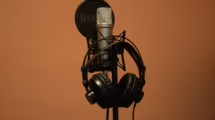Decoding Gheg: A Linguistic Journey Through Embryomorphemes and Regional Dialects
Introduction
Language serves not merely as a means of communication but as a living conduit of history, culture, and identity. In this article, we embark on an extensive exploration of Gheg, one of the principal Albanian dialects. We aim to decode its intricacies through the lens of embryomorphemes—basic units that convey meaning—and examine its regional variations that enrich the linguistic tapestry of Albania.
Understanding Gheg: An Overview
Gheg is predominantly spoken in the northern regions of Albania, Kosovo, and parts of Montenegro. It forms the northern branch of Albanian dialects, alongside the southern counterpart, Tosk. Gheg has been influenced by a multitude of languages and cultures, which have shaped its phonetics, syntax, and lexicon over the centuries.
While Tosk tends to be the dialect represented in standard Albanian, Gheg remains a vibrant and essential part of Albanian identity. Understanding Gheg is crucial not only for linguistic scholars but also for anyone interested in the rich tapestry of Balkan culture.
The Concept of Embryomorphemes
To delve deeper into Gheg, we introduce the concept of embryomorphemes. These are the smallest units of meaning that can exist independently or contribute to larger structures. In Gheg, embryomorphemes often hold key insights into the dialect’s idiomatic expressions, grammar, and phonological patterns.
For example, the Gheg embryomorpheme “ka” (meaning “has”) forms the foundation for various derivatives. This simple word can manifest in sentences with different contexts while retaining its core meaning. The study of such morphological units not only reveals the flexibility of Gheg but also underscores the importance of morphology in understanding linguistic evolution.
Phonetic Features of Gheg
The phonetics of Gheg are markedly distinct from those of Tosk, showcasing a variation in pronunciation that is both compelling and instructive. Gheg speakers often exhibit a richer array of phonemes, including nasal vowels that provide unique auditory characteristics.
For instance, the Gheg pronunciation of the letter “ë” is especially noteworthy. In some Gheg variants, it can sound closer to “u,” creating a nuanced auditory experience that can alter the meaning of words. This phonetic diversity is a gem for linguists, providing a fertile ground for further investigation.
Syntax and Grammar: Gheg’s Unique Structure
While the syntactic structures of Gheg and Tosk share commonalities, Gheg reveals unique features that warrant attention. These distinctions manifest in areas like verb conjugation, noun cases, and word order.
Verb Conjugation
Gheg verbs often employ different conjugation patterns that reflect regional variations. For example, while the standard Albanian might use a more simplified verb form, Gheg dialects demonstrate a richer array of tenses and moods. This complexity allows for more nuanced expression and conveys subtleties that standard forms might overlook.
Noun Cases
Noun cases in Gheg can also vary significantly from Tosk. In some variants, Gheg preserves certain archaic forms that have long since evolved in Tosk. This retention offers a window into the historical development of the Albanian language as a whole and serves as a testament to the regional linguistic diversity within Albania.
Regional Dialects: A Mosaic of Expression
Gheg is not a monolithic entity; rather, it encompasses an array of regional dialects each with its unique attributes. Understanding these variations offers critical insights into the cultural and social fabric of the region.
The Kukës Dialect
In the Kukës region, Gheg speakers exhibit noteworthy phonetic differences. The use of palatalized consonants can be observed, leading to a distinct sound that characterizes the local speech. This phonetic feature has implications for identity and community, as linguistic markers often become symbols of belonging.
The Shkodra Dialect
Conversely, the Shkodra dialect integrates a range of borrowings from Italian, Serbian, and other languages. This dialect serves as a historical crossroads, reflecting the diverse influences that have shaped the Gheg dialect over centuries.
The Role of Culture and Identity
Language is indelibly linked to cultural identity, and the Gheg dialect plays a crucial role in conveying the history and traditions of its speakers. Folklore, music, and poetry often find their expression in Gheg, underscoring the dialect’s significance beyond mere communication.
Folklore and Oral Traditions
Folklore remains a vibrant aspect of Gheg culture, often passed down through generations via oral storytelling. The richness of these narratives owes much to the unique characteristics of the Gheg dialect. Embryomorphemes within these tales are loaded with cultural meaning, adding depth to the text and providing valuable insights into the community’s historical experiences.
Music and Poetry
Gheg musical traditions offer yet another avenue for the expression of regional identity. Songs often employ local dialectical features and idiomatic expressions, creating an auditory landscape that resonates deeply with the community. Poetic forms, characterized by their rhythm and imagery, often utilize the dialect’s unique phonetic attributes, further enriching its literary value.
Challenges in Language Preservation
Despite the cultural wealth embedded in Gheg, the dialect faces significant challenges related to language preservation. Urbanization, globalization, and educational dynamics often favor standard Albanian, putting regional dialects at risk.
Educational Dynamics
Schools often emphasize standard Albanian over Gheg, contributing to a decline in the use of the dialect among younger generations. The perils of this shift include a loss of linguistic diversity and the erosion of cultural identity. Efforts to reinvigorate interest in Gheg—through education, literature, and media—are essential for fostering appreciation and pride in regional heritage.
The Future of Gheg: A Call to Action
As we reflect on the complexities of Gheg, it becomes evident that the dialect’s future hinges on concerted efforts for its preservation and promotion. Involving communities, educators, and linguists can provide a multifaceted approach to safeguarding Gheg for future generations.
Community Engagement
Activating local communities is vital. Community-led initiatives, such as language workshops and storytelling events, can instill pride in the dialect while fostering intergenerational exchange. Engaging younger audiences through modern platforms—social media, podcasts, and video content—can make Gheg accessible and relatable.
Academic Contributions
Academic research into Gheg, focusing on its phonetics, morphology, and syntax, can streamline awareness of its linguistic significance. Linguists working alongside communities can offer valuable insights into language preservation strategies, ensuring that Gheg maintains its relevance in an increasingly interconnected world.
Conclusion
Decoding Gheg is akin to peeling back the layers of history, culture, and identity that define not only a dialect but a community. Through the lens of embryomorphemes, we uncover extensive richness in Gheg that speaks volumes about its speakers.
Exploring its phonetic landscape, syntactic structures, and regional dialects reveals a dynamic tapestry woven through centuries of tradition and evolution. The journey does not end here; as we advocate for the preservation of Gheg, we embrace the responsibility to keep this vibrant dialect alive. By understanding and celebrating its complexities, we contribute to the enduring legacy of a language that resonates deeply within the heart of the Albanian people.
In a world that increasingly values homogenization over diversity, the story of Gheg serves as a poignant reminder of the importance of linguistic richness and cultural heritage. As we navigate our way forward, let us strive to honor and protect the intricate mosaic that is Gheg, ensuring that its voice continues to echo through generations to come.
References
- [mfn refencenumber] Gheg Dialect Variations: Cultural and Linguistic Significance
- [mfn refencenumber] The Role of Morphology in Albanian Language: Gheg and Tosk
- [mfn refencenumber] Phonetic Features of Gheg: A Comparative Study
- [mfn refencenumber] Folklore and Identity in the Gheg Region
- [mfn refencenumber] Preservation Efforts for Regional Dialects in Albania
- [mfn refencenumber] Community Engagement and Language Revitalization Projects


























Add Comment